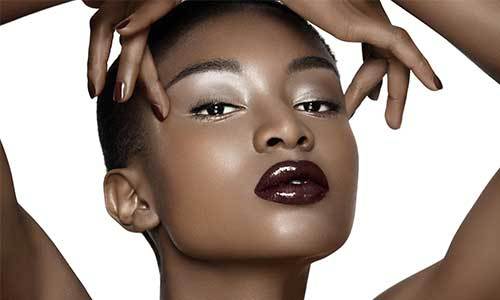Eyebrows are life and getting the right shape, thickness and color is super important to any eyebrow lover. In recent years, microblading has become a saving grace for those who want exceptional brows without having to wake up every day and make time for “brow-perfecting” in their beauty routine; however, is microblading safe for darker skin tones?
Microblading , according to Medical News Today, is a semi-permanent cosmetic tattooing procedure which helps make sparse eyebrows look fuller. The pigment used for microblading is not as potent as a permanent tattoo and may last up to three months.
Jessica Cruel, Deputy Beauty Director for Refinery29, put microblading to the dark skin test and went to Piret Aava, a.k.a the Eyebrow Doctor, in New York to have her procedure done.
While having her brows beautified, Cruel asked Aava some pressing questions about the process and what to do to avoid mishaps. Here are the 5 key things she learned:
1. PICK THE RIGHT MICROBLADER
PHOTO: Allure
There is a key difference between a microblader and a tattoo artist, so make sure you are choosing the right person for the job.
“… the tools and ink are completely different for microblading. The pigments are less concentrated than tattoo ink, and they come specially mixed to coordinate with brow colors. Using the wrong ink can make brows turn strange colors, like green,” Cruel shared.
In addition to the tools used, you want to make sure the person you choose has experience with various skin tones and achieving desired looks.
“Look at before-and-after pictures and look at healed results because that is what you’re actually going to be walking around with. They look nice and sharp and beautiful and full right away, but the stroke expands a little bit — especially if your skin is oily. If the strokes are too close together, you are going to have solid block eyebrow,” Aava added.
2. SAY NO TO BLACK INK

PHOTO: Tenor
According to Aava, black is the worst color option for dark skin because when it heals it may turn out gray.
“Aava matches her pigments to the natural color of her clients' brows, and her darkest shade option is ebony brown. If you want your brows to be lighter or darker than the hair you currently have, make sure to get your natural hairs bleached or dyed before your microblading appointment.”
3. UNDERTONES MATTER
PHOTO: The Fashion Engineer
“If you have yellow undertones, I use pigment with cooler tones. If you have a lot of blue in the skin, I use warmer tones. Some people are right in the middle, so I can’t really tell, but I always tend to use cooler tones because no one wants an orange eyebrow,” Avaa told Curel.
4, TOUCH-UP, PLEASE
PHOTO: Hello Magazine
After getting your microblading procedure done the first time, your eyebrows will experience a healing process. Usually, in about four to six weeks your brows will be completely healed and the scabs will fade away. After that takes place, you may see areas that need to be filled in or corrected.
“Aava says that different people metabolize pigment differently, which can lead to brows looking warmer or cooler once they heal. ‘It’s a foreign object in your skin and your body is trying to get rid of it,’ says Aava. your brows can look a little green or orange after they heal, and it also means that the pigment can disappear faster for some.”
5. HYPERPIGMENTATION
PHOTO: BrowsAtlanta
“Any time you do anything on brown skin, there is potential for hyperpigmentation," Dermatologist Mona Gohara, MD says. "So it’s important to do it in the right hands, and have really good sun protection afterwards."
Ready. Set. Boss. Our daily email is pouring out inspiration with the latest #BlackGirlBossUp moments, tips on hair, beauty and lifestyle to get you on track to a better you! Sign up today.
